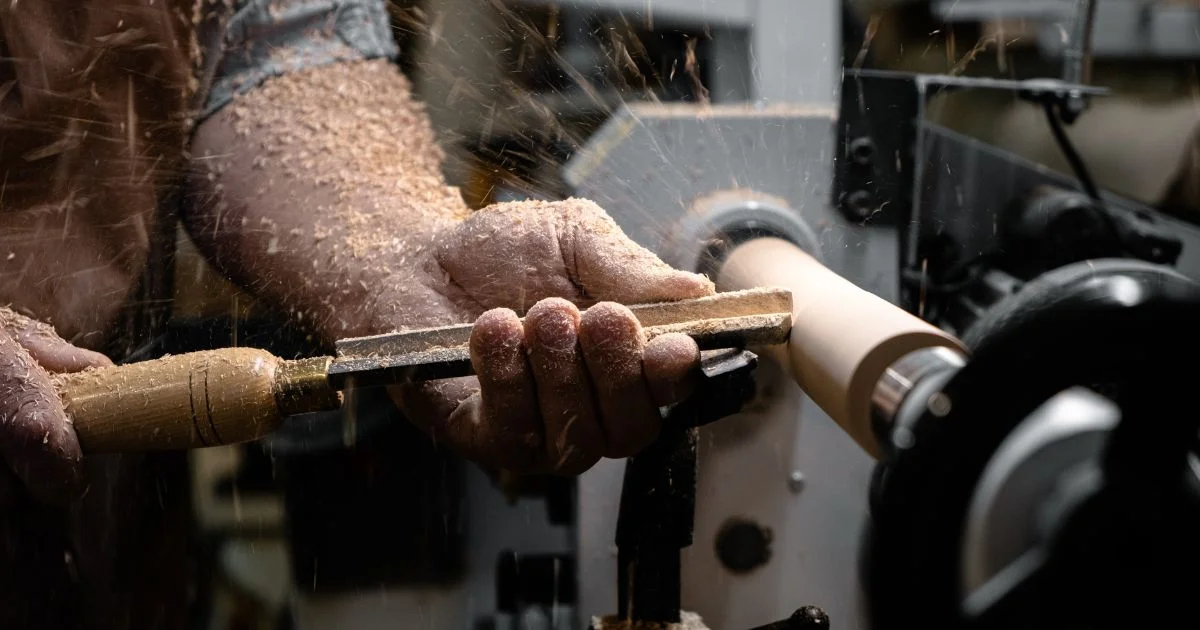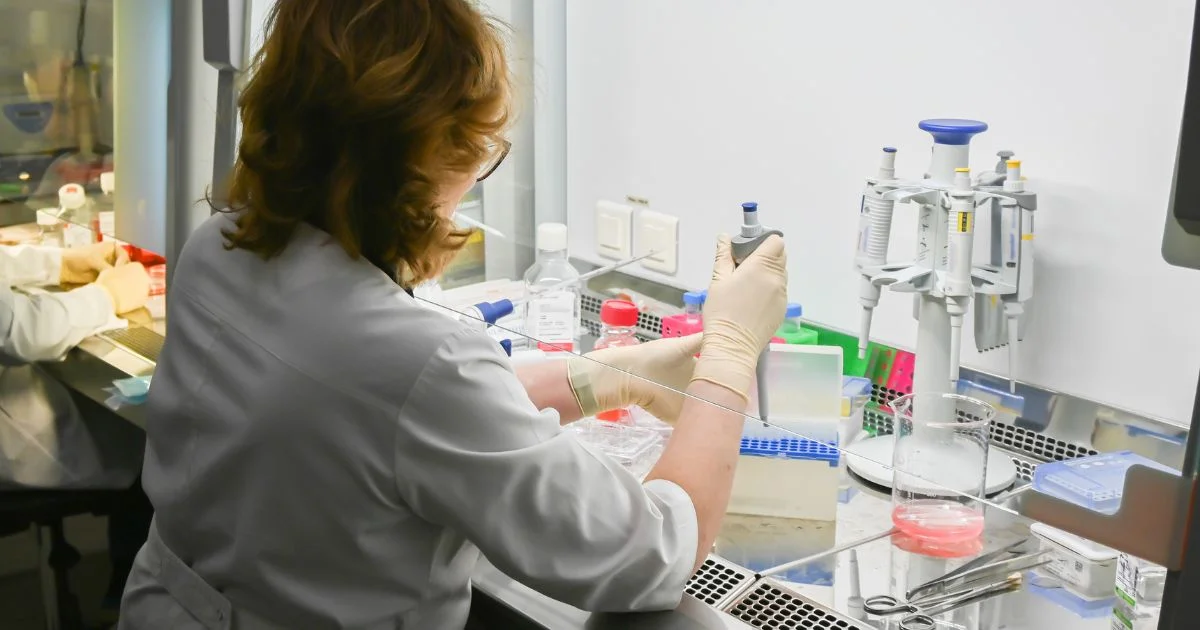
A light grind on a metal part. A quick sanding pass on a composite edge. A few minutes of soldering a small circuit board. None of these seem like major operations. But in seconds, each can release fine particles, fumes, or vapors that spread far beyond the workbench.
Working alongside manufacturers, we've seen how contaminants don't just disappear in busy environments. They settle into tools and drift toward other stations. Most critically, they hang in the operator's breathing zone.
The result is more than just dusty surfaces or unpleasant smells. It's reduced air quality, potential health risks, and compromised product integrity. For your bottom line, this translates to increased absenteeism and higher scrap rates.
Downdraft tables solve this problem where it starts—at the workstation. By pulling air downward through a perforated surface into a filter system, they trap dust and fumes before they can spread. Through our installations at Air Force 1, we've seen how even small airborne hazards can derail workflows.
How Downdraft Tables Actually Work
Many facilities struggle with airborne contaminants despite having some form of ventilation. The problem is that standard systems fail to capture particles at their source. Downdraft tables work on a simple principle that addresses this failure by creating a capture zone that pulls harmful particles away from where workers breathe.
Unlike overhead systems that fight against natural air currents, downdraft systems work with physics. Hot air from welding or grinding naturally rises, but the downdraft's pull creates enough velocity to overcome this tendency. The result is immediate capture of particles before they disperse.
Standard tables often deliver uneven suction across the work surface, creating dead zones where contaminants escape. We've found that properly designed systems maintain consistent airflow across the entire work area. This consistency is what separates effective containment from partial solutions that give a false sense of security.
Manual processes typically generate specific types of contaminants with unique characteristics. Welding fumes behave differently than sanding dust. Soldering vapors move differently than pharmaceutical powders. Each requires a specific approach to airflow and filtration.
Why Traditional Containment Falls Short
Most facilities start with improvised solutions before investing in proper downdraft systems. These temporary fixes often become permanent installations despite their limitations. We see this pattern across industries from automotive to electronics manufacturing.
Shop vacuums connected to homemade boxes create significant problems. They lack the controlled airflow needed for proper containment and create turbulence that can actually worsen particle dispersion. The suction is too concentrated in one area while leaving the rest of the workspace unprotected.
Overhead hoods present a fundamental design flaw. They must pull contaminated air through the operator's breathing zone. Your workers breathe in particles before the system can remove them, negating much of the intended protection.
In our experience with hundreds of facilities, inadequate systems give a false sense of security. They appear to work because you can see or hear them operating. But without proper engineering, they often recirculate the very contaminants they're meant to remove.
The Filtration Challenge
Capturing contaminants is only half the solution. The right filtration system determines whether particles stay contained or return to your facility air. This is where many basic systems fail operations.
Standard filters quickly clog with fine particulates from manual processes. Once airflow decreases, the system can't capture dust effectively. Operators then face two bad options: work with inadequate protection or stop working to change filters.
The key insight is matching filter media to specific contaminants. Metal grinding produces different particle sizes than woodworking. Pharmaceutical powders require different filtration than soldering fumes. HEPA filters provide the highest level of particulate removal but need proper pre-filtration.
Sustained performance means fewer workflow interruptions and consistent production quality. It also ensures predictable maintenance costs—critical factors for meeting delivery schedules and production targets. Your operations need sustained performance, not just initial containment.
The Power Behind the Downdraft
A downdraft table is only as effective as the blower system driving it. Many facilities underestimate the importance of proper air movement design. This critical component determines both capture efficiency and long-term operating costs.
Direct drive blowers offer significant advantages over traditional belt-driven options for downdraft applications. The motor shaft connects directly to the impeller, eliminating efficiency losses through belts and pulleys. This design reduces maintenance needs while delivering more consistent performance.
Sizing the blower correctly requires calculating the exact airflow needed for your specific contaminants and work area. Underpowered systems fail to capture effectively, while oversized units waste energy and create unnecessary noise. The right balance comes from proper engineering, not guesswork.
Proper engineering prevents costly scenarios we often encounter: facilities investing in systems that either underperform or waste energy. Both situations result in unnecessary operational costs and frustrated operators who often bypass safety measures.
Customization for Your Manual Processes
Working with many facilities, we've found that standard tables rarely deliver the best results. The best solutions match specific processes, dust types, and workspace constraints. When standard configurations don't match specific processes, productivity and safety both suffer.
Modular systems solve this problem by letting you configure the exact setup needed for each workstation. Without this flexibility, operators often create workarounds that compromise containment. Some processes need added side drafts to complement the downdraft, while others require specialized work surfaces.
Table height and ergonomics directly impact both safety and output. Workers who stretch or bend to use poorly sized tables work less efficiently and often bypass safety features. Workstations should fit people, not force people to adjust to the equipment.
The most effective setups blend seamlessly with existing work processes. From the field, we see that the right design actually boosts productivity while adding protection. When systems match workflows instead of disrupting them, we've documented productivity gains alongside improved air quality.
Industry-Specific Applications

Different industries face unique challenges that require specialized downdraft solutions. The OSHA identifies that "engineering controls" like downdraft tables are a key method in the hierarchy of hazard controls. These controls are designed to reduce exposure at the source.
In pharmaceutical manufacturing, even trace amounts of active ingredients can cause cross-contamination. Downdraft tables with HEPA filtration and smooth, cleanable surfaces maintain the controlled environment these operations demand. The containment prevents product migration between batches and protects operators from exposure.
Electronics assembly areas generate soldering fumes containing rosin and metals. These contaminants require specialized carbon filtration to prevent health hazards and equipment damage. Our Static Control Systems, which prevent harmful static discharge in sensitive environments, can be integrated with downdraft tables.
Metal fabrication shops face some of the most challenging containment needs. Grinding, welding, and cutting operations produce a mix of particulates and fumes that vary in size and composition. WorkSafeBC specifically addresses the hazards of welding gases and fumes, recommending "local exhaust ventilation" solutions.
Real-World Implementation Considerations
Moving from theory to practice, setting up downdraft tables brings real-world challenges. Space limits often restrict options, especially in existing production areas. We've developed compact systems that deliver full protection with minimal footprint.
Ductwork needs differ based on whether you're reusing filtered air or venting outside. Systems that recirculate air need better filtration but save on heating and cooling costs. Your building layout and current HVAC setup help determine which approach fits best.
Power needs vary widely among different downdraft systems. Direct drive blowers provide more reliable performance and use less energy than traditional belt-driven types. They also need less maintenance, which lowers your long-term costs.
Noise matters in work areas where people need to communicate. Poorly designed systems can be too loud for comfort, causing workers to switch them off. Remember that dust control only works when it's actually running, so operator acceptance is crucial for success.
Measuring Success Beyond Basic Capture
How can you tell if your downdraft tables really work? Quick checks like smoke tests give fast feedback but don't show the full picture. The true test is how well they perform over time. Measuring particle levels before and after installation provides clear results.
Feedback from workers offers key insights into real-world effectiveness. Operators quickly spot when systems aren't working right and often create their own fixes. Their input helps catch issues before they grow into bigger problems.
The best measure of success combines technical results with practical benefits. Effective downdraft tables mean less cleaning in nearby areas and reduced maintenance needs on surrounding equipment. Most importantly, they keep your people safe while boosting productivity.
Your shop needs steady protection, not just good performance when first installed. Regular testing ensures the system keeps working well between maintenance visits. Consistent performance maintains productivity and quality standards over time.
Making the Right Choice for Your Operation
Choosing the right downdraft system begins with a careful look at what you need. What types of dust and fumes do you create? How much work space do your operators need? What level of filtration is required? These questions drive the development of effective solutions.
Think about both current and future needs in your decision. The cheapest option rarely gives the best long-term value. Upkeep needs, filter replacement frequency, and power use all affect your total costs over time.
Look for systems that can change as your work changes. Modular designs let you adjust tables when needed. Variable airflow helps balance capture effectiveness with energy use.
Are you wondering how much productivity you're losing to poor air quality in your manual processes? We understand your challenges and can design a downdraft solution that fits your specific needs. Contact us to discover how we can transform your operation with the right containment approach.

